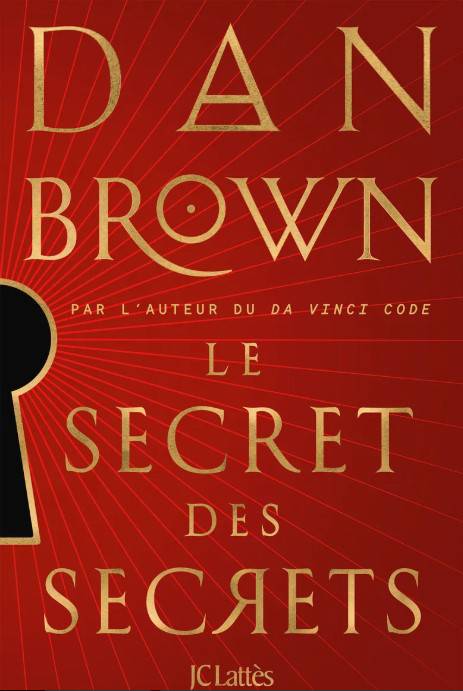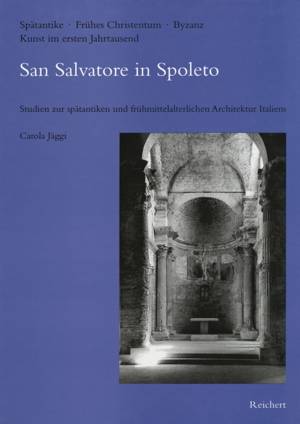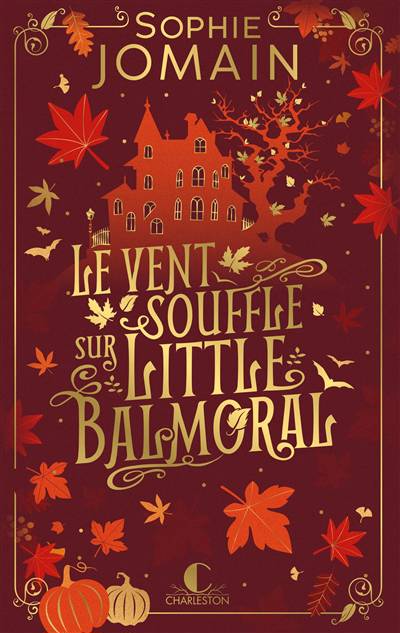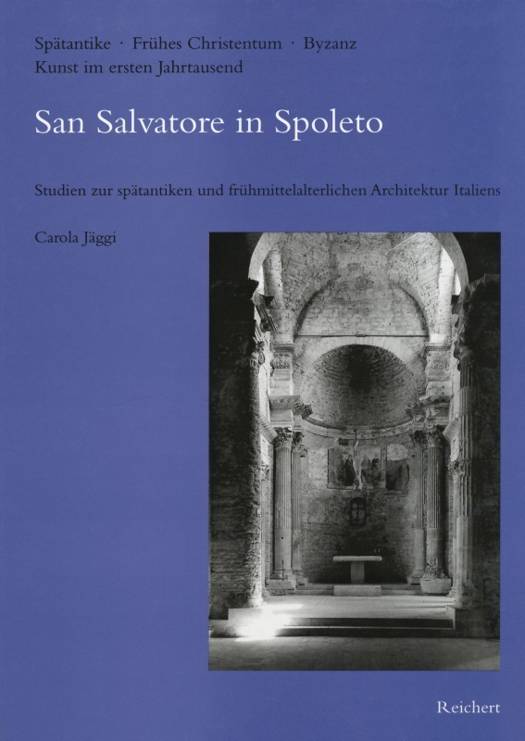
- Retrait gratuit dans votre magasin Club
- 7.000.000 titres dans notre catalogue
- Payer en toute sécurité
- Toujours un magasin près de chez vous
- Retrait gratuit dans votre magasin Club
- 7.000.0000 titres dans notre catalogue
- Payer en toute sécurité
- Toujours un magasin près de chez vous
San Salvatore in Spoleto
Studien Zur Spatantiken Und Fruhmittelalterlichen Architektur Italiens
Carola Jaggi
149,95 €
+ 299 points
Description
English summary: Works of art without any real parallels, precursors or successors have always particularly confused researchers of the history of art. In the case of S. Salvatore in Spoleto the impossibility of anchoring the architecture within the known typologies and series of development resulted in an outright absurd spectrum of dating approaches from the early 4th up to the 12th century. An important role for the discussion is played by the building sculpture which, due to its high-ranking artistic quality according to popular opinion, paradoxically suggests a dating back to the early Caesar period. However, its partially clear Christian entirety of motives rules out its emergence before the tolerance edict of 313. How can this phenomenon be explained? Answers to this question can only be given on the basis of a solid analysis of buildings with its restoration history as is presented in this volume.The view of the sacral topography in Spoleto during the period under discussion is intended to shed light upon the context of the local history of buildings. Finally, S. Salvatore is confronted with Italian buildings from the 6th to the 8th century whereby the outer form of such buildings are by no means identical with those of the church but show a certain similarity with such forms, at least from a structural point of view with regard to the specific reception of older architectural and decoration forms as well as the existence of eastern forms. German description: Kunstwerke ohne eigentliche Parallelen, Vorlaufer oder Nachfolger haben die kunsthistorische Forschung immer ganz besonders irritiert. Im Falle von S. Salvatore in Spoleto hat die Unmoglichkeit, den Bau innerhalb der bekannten Typologien und Entwicklungsreihen zu verankern, zu einer geradezu absurd erscheinenden Bandbreite von Datierungsansatzen vom fruhen 4. bis 12. Jahrhundert gefuhrt. Eine wichtige Rolle spielt in dieser Hinsicht die Bauskulptur, die paradoxerweise durch ihre hohe kunstlerische Qualitat nach gangiger Auffassung eine Datierung in die fruhe Kaiserzeit nahelegt, ihre teilweise eindeutig christliche Motivik aber eine Entstehung vor dem Toleranzedikt von 313 verbietet. Wie ist dieses Phanomen zu erklaren? In welche "Renaissance" klassischer Formen ist dieses Monument anzuordnen? Antworten auf diese Frage konnen nur auf der Basis einer soliden Bauanalyse mit Restaurierungsgeschichte gegeben werden, die in diesem Band vorgenommen wird.Der Blick auf die Sakraltopographie in Spoleto in dem zur Debatte stehenden Zeitraum soll den lokalen bauhistorischen Kontext erhellen. Schliesslich wird S. Salvatore mit italienischen Bauten des 6. bis 8. Jahrhunderts konfrontiert, deren aussere Gestalt zwar keineswegs mit derjenigen der Kirche S. Salvatore in Deckung zu bringen ist, die aber in der spezifischen Rezeption alterer Architektur- und Dekorationsformen sowie der Prasenz ostlichen Formenguts zumindest auf einer strukturellen Ebene Parallelen zu dieser aufweist.
Spécifications
Parties prenantes
- Auteur(s) :
- Editeur:
Contenu
- Nombre de pages :
- 472
- Langue:
- Allemand
- Collection :
- Tome:
- n° 4
Caractéristiques
- EAN:
- 9783895000782
- Date de parution :
- 01-12-98
- Format:
- Livre relié
- Format numérique:
- Genaaid
- Dimensions :
- 240
- Poids :
- 1191 g

Les avis
Nous publions uniquement les avis qui respectent les conditions requises. Consultez nos conditions pour les avis.






